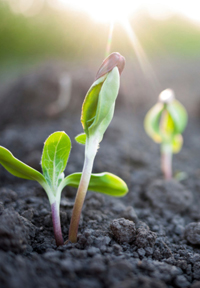In heavily farmed parts of Central America, South America, and across the Caribbean, “the most degraded soils have not reached the point of no return. They can still be restored.”
So says CFAES’ Rattan Lal, Distinguished University Professor of Soil Science and 2020 World Food Prize laureate, who’s helping lead a new, 34-country initiative to tackle that restoration.
Why it’s important: Some 36 million people in the region don’t have enough good food to eat, and degraded soils play a role in it. Success, Lal says, will mean “we can eliminate hunger and malnutrition in the region, and we can protect the natural resources that are now being degraded.”
 In Chicago,
In Chicago,